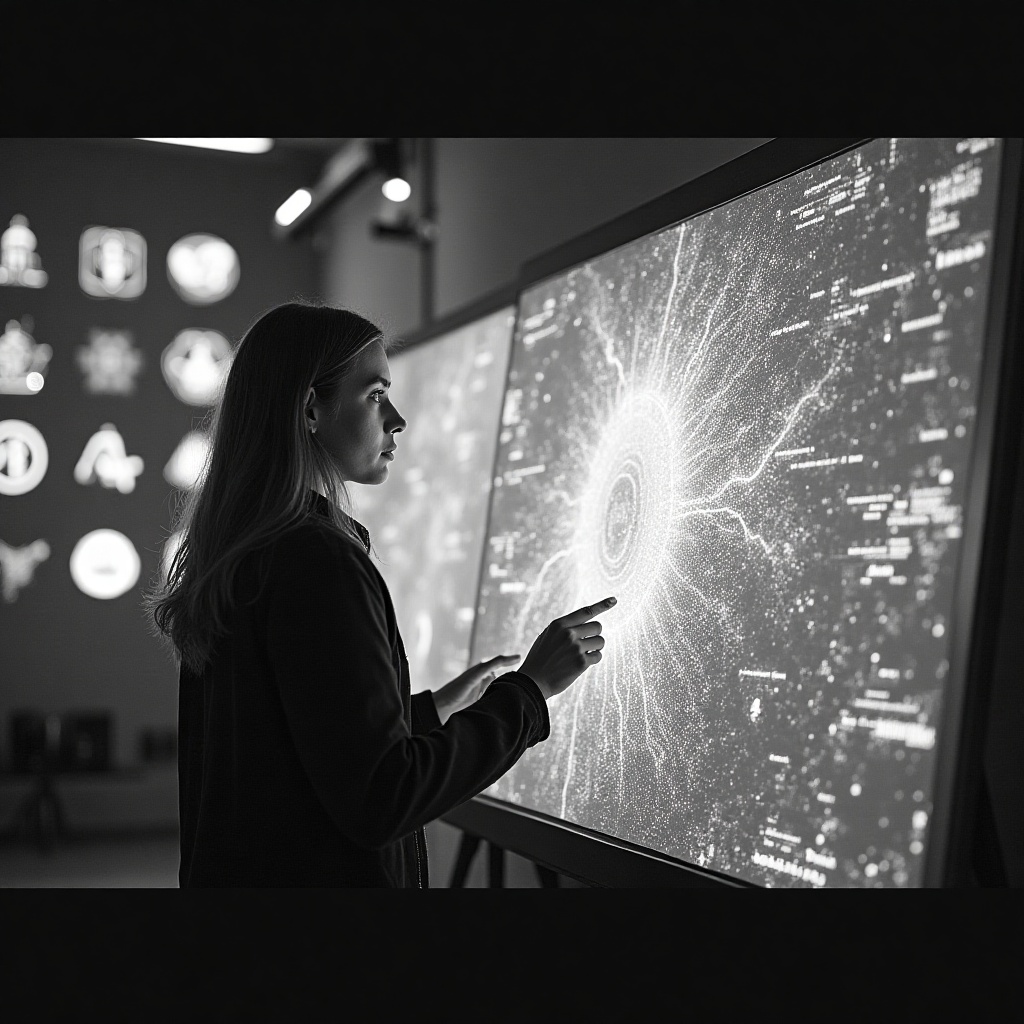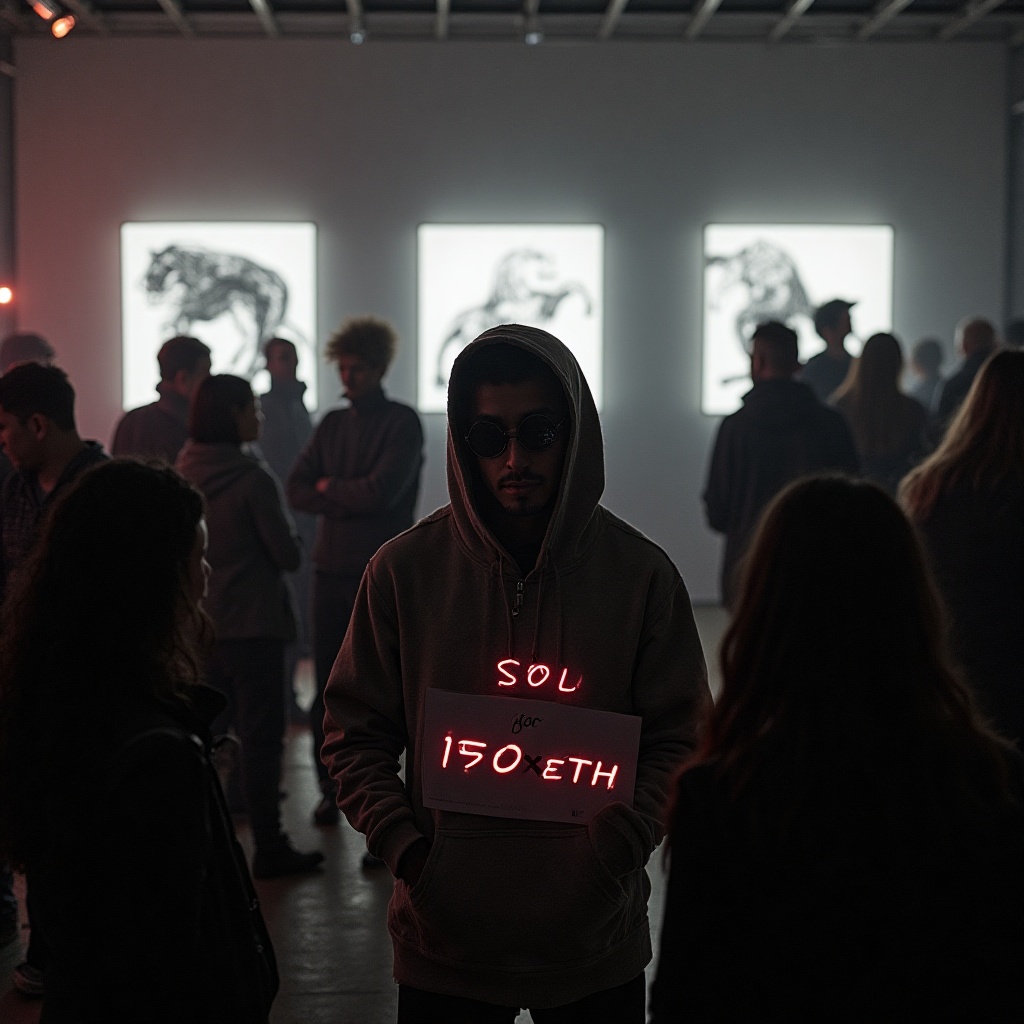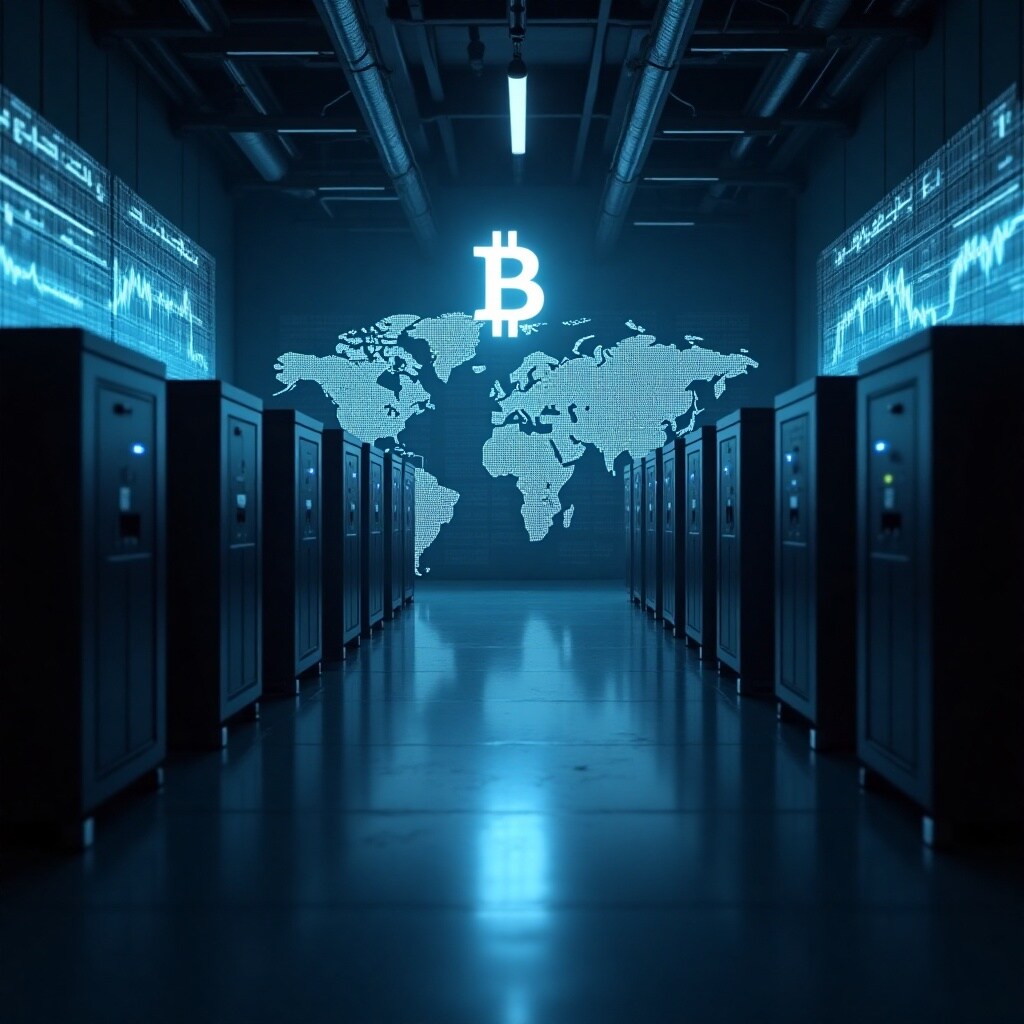The fusion of generative AI and NFTs is revolutionizing digital artistry, offering creators unprecedented avenues for innovation and income. This synergy enables artists to produce unique, algorithmically generated artworks and monetize them through blockchain technology.
Generative AI refers to algorithms that can autonomously create content—be it images, music, or learning patterns from existing data. In the realm of art, tools like Midjourney, DALL·E 2, and Artbreeder empower artists to generate intricate visuals from simple text prompts or by blending existing images.
When these AI-generated artworks are minted as NFTs (Non-Fungible Tokens), they become verifiable digital assets that can be bought, sold, or traded on blockchain platforms. This process not only ensures authenticity and ownership but also opens up new revenue streams for artists, including royalties from secondary sales.
This article delves into the intersection of generative AI and NFTs, exploring how digital artists can harness this technology to expand their creative horizons and financial prospects.
Understanding Generative AI in Digital Art
Generative AI is transforming the landscape of digital art, offering artists innovative tools to create unique and compelling works. By leveraging algorithms and machine learning, generative AI enables the creation of art that is both novel and reflective of the artist’s vision.
Generative AI in art refers to the use of algorithms and machine learning models to autonomously produce artworks. These systems are trained on vast datasets of existing art and can generate new pieces by identifying and replicating patterns and styles. The process involves inputting prompts or parameters, which the AI uses to create original images, music, or other forms of art.
For instance, platforms like Midjourney and DALL·E 2 allow artists to input textual descriptions, which the AI then transforms into visual representations. This method enables the rapid creation of diverse artworks, expanding the creative possibilities for artists.
The concept of generative art isn’t new. In the 1960s, artists like Georg Nees and Frieder Nake began experimenting with computer-generated art, using algorithms to create visual patterns. These early endeavors laid the groundwork for today’s generative AI technologies.
Over the decades, advancements in computing power and machine learning have significantly enhanced the capabilities of generative art. Modern AI models can now produce highly detailed and stylistically diverse artworks, often indistinguishable from those created by human hands.
Generative AI serves as a collaborative partner, offering new perspectives and ideas that can inspire artists to explore uncharted creative territories. AI can rapidly generate multiple iterations of an artwork, allowing artists to experiment with different styles and concepts without the time constraints of traditional methods.
With user-friendly interfaces, generative AI tools are accessible to artists regardless of their technical background, democratizing the art creation process. Artists can fine-tune AI-generated outputs to align with their unique vision, blending human creativity with machine precision.
While generative AI offers numerous advantages, it also raises important ethical questions. Issues such as authorship, originality, and the potential for AI to replicate existing artists’ styles without consent are subjects of ongoing debate. It’s crucial for artists and developers to navigate these concerns thoughtfully, ensuring that the integration of AI into art respects intellectual property rights and creative integrity.
Generative AI stands at the forefront of a new era in digital art, providing artists with powerful tools to expand their creative horizons. By understanding and embracing this technology, artists can unlock unprecedented opportunities for innovation and expression.
The Rise of AI-Generated NFTs
The fusion of artificial intelligence (AI) and blockchain technology has ushered in a transformative era for digital art. AI-generated NFTs (Non-Fungible Tokens) are not only redefining artistic creation but also reshaping the dynamics of art ownership, valuation, and distribution.
AI-generated NFTs are digital artworks created using machine learning algorithms, particularly generative models like Generative Adversarial Networks (GANs). These models are trained on extensive datasets of existing art, enabling them to produce novel and unique pieces that can be tokenized on blockchain platforms. Once minted as NFTs, these artworks gain verifiable ownership and provenance, allowing them to be bought, sold, or traded in digital marketplaces.
Several projects and artists have been instrumental in bringing AI-generated NFTs to the forefront. Botto is an autonomous AI artist that collaborates with a community to create and auction artworks. Botto has generated over $5 million in sales, demonstrating the commercial viability of AI-driven art.
Lost Poets by Pak is a generative art collection and strategy game that achieved an initial sales volume of $70 million, highlighting the market’s appetite for AI-generated narratives. Chromie Squiggle by Snowfro is a project on the Art Blocks platform, where each piece is generated through code, emphasizing the uniqueness and unpredictability of generative art.
The integration of AI in NFT creation has significantly influenced the digital art market. The global AI in art market was valued at approximately $3.2 billion in 2024 and is projected to reach around $40.4 billion by 2033, indicating a compound annual growth rate (CAGR) of 28.9 percent.
AI-generated NFTs have attracted a new demographic of collectors, particularly younger, tech-savvy individuals who value the blend of technology and creativity. Notably, Christie’s auctioned an AI-generated artwork titled “Portrait of Edmond de Belamy” for nearly $432,000, signaling institutional recognition of AI art’s value.
Despite the enthusiasm, AI-generated NFTs raise several concerns. Determining the creator—whether it’s the AI, the programmer, or the dataset—poses philosophical and legal questions about authorship. Since AI models are trained on existing artworks, there’s an ongoing debate about the potential infringement of intellectual property rights. The ease of generating art through AI could lead to an oversupply in the NFT market, potentially diluting the value of individual pieces.
AI-generated NFTs represent a significant evolution in the art world, offering new avenues for creativity and monetization. As technology continues to advance, it’s crucial for artists, collectors, and platforms to navigate the accompanying ethical and legal landscapes thoughtfully.
Tools and Platforms for Creating AI-Generated Art
Embarking on the journey of creating AI-generated art requires selecting the right tools that align with your creative vision and technical proficiency. Below is an in-depth exploration of some of the most prominent platforms available to artists today.
Midjourney
Midjourney is an AI-powered image generator renowned for producing high-quality, stylized images from textual prompts. It operates primarily through Discord, offering a unique community-driven experience. Midjourney generates four image variations per prompt, supports advanced prompt parameters for fine-tuning outputs, and offers “Stealth Mode” for private image generation in higher-tier plans.
DALL·E 2 by OpenAI
DALL·E 2 is an AI system that generates realistic images and art from natural language descriptions. It excels in combining concepts, attributes, and styles to produce unique visuals. Features include text-to-image generation, inpainting and outpainting capabilities for editing images, and the ability to create variations of existing images.
Artbreeder
Artbreeder is a collaborative platform that allows users to create and modify images using AI by blending existing images and adjusting parameters. It features “genes” sliders to adjust image attributes and supports crossbreeding images to create new artworks.
RunwayML
RunwayML offers a suite of AI tools designed for creatives, including capabilities for video editing, image generation, and more. It includes text-to-image and text-to-video generation, real-time collaboration features, and integration with creative software.
Hotpot.ai
Hotpot.ai provides a range of AI tools for generating images, enhancing photos, and creating graphics. It includes AI image generation from text prompts, photo restoration and colorization tools, and templates for social media and marketing materials.
Selecting the appropriate AI art generation tool depends on your specific needs. Each platform offers unique features and pricing structures, so it’s essential to consider your artistic goals and budget when choosing the right tool for your creative endeavors.
Minting and Launching Your AI-Generated NFT Drop
Embarking on the journey of minting and launching your AI-generated NFT collection is a pivotal step in transforming your digital creations into verifiable assets on the blockchain. This process not only authenticates your artwork but also opens avenues for monetization and global exposure.
Prepare Your Digital Wallet
Before minting NFTs, you’ll need a digital wallet to store your assets and interact with blockchain platforms. Popular options include MetaMask, Coinbase Wallet, and Trust Wallet.
Select the Appropriate Blockchain
Choosing the right blockchain is crucial, as it affects transaction fees, environmental impact, and marketplace compatibility. Ethereum is widely used but can have higher gas fees. Alternatives like Polygon offer lower fees and faster transactions.
Choose a Suitable NFT Marketplace
Selecting the right marketplace is essential for reaching your target audience and ensuring a smooth minting process. OpenSea, Rarible, Foundation, and SuperRare each offer unique environments for artists, from broad accessibility to curated exclusivity.
Mint Your AI-Generated Artwork
Minting involves uploading your digital artwork to the chosen marketplace and creating a unique token on the blockchain. This includes connecting your wallet, uploading the artwork, adding metadata, setting royalties, and minting the NFT. Some platforms offer “lazy minting,” where the buyer covers the gas fee during the purchase.
Strategically Schedule Your NFT Drop
Timing your NFT release can significantly impact its success. Choose a time when your target audience is most active online, avoid major events, and build anticipation through pre-launch announcements and community engagement.
Promote Your NFT Collection Effectively
Promotion is vital to success. Use social media, influencer collaborations, press outreach, and interactive events like AMAs to drive awareness and engagement.
Monitor and Analyze Post-Drop Performance
After your NFT drop, track sales data, collect community feedback, and analyze engagement metrics to assess success and improve future projects.
By following these steps, artists can successfully mint and launch AI-generated NFT collections, establishing a strong presence in the evolving digital art ecosystem.
Monetization Strategies and Revenue Streams for AI-Generated NFT Art
Transforming your AI-generated art into a sustainable income stream involves more than just minting and listing NFTs. It requires a strategic approach to monetization, leveraging various avenues to maximize earnings and build a lasting presence in the digital art space.
Direct Sales: The Initial Revenue Boost
The most straightforward method of earning from your AI-generated art is through direct sales on NFT marketplaces. Platforms like OpenSea, Foundation, and SuperRare allow artists to list their NFTs for sale, either at a fixed price or through auctions.
Start with accessible pricing to attract initial buyers and gradually increase prices as your reputation grows. Decide between single-edition (1/1) pieces or limited editions. Provide detailed descriptions and context for your artwork to engage potential buyers and convey the story behind each piece.
Royalties: Earning from Secondary Sales
By embedding royalty clauses into the smart contract of your NFT, you receive a percentage each time your artwork is resold. This feature ensures ongoing income as your art changes hands in the marketplace.
Be aware that not all marketplaces enforce royalty payments. Ensure your smart contract is correctly set up to include royalty terms to secure your rights long-term.
Licensing: Expanding Revenue through Usage Rights
Beyond selling the NFT itself, you can license your AI-generated art for various uses, such as merchandise, publications, or digital media. This allows you to retain ownership while generating additional revenue.
Community Engagement: Building a Loyal Collector Base
Foster a community around your art through social media, Discord servers, exclusive content for holders, and collaborations. A strong community helps increase visibility and demand.
Diversifying Income: Exploring Additional Opportunities
Explore monetization beyond the blockchain. Offer physical merchandise, educational workshops, subscription-based access to collections, and collaborations to tap into alternative income streams.
Legal and Ethical Considerations in AI-Generated NFT Art
As AI-generated art continues to permeate the NFT landscape, it brings forth a myriad of legal and ethical challenges. Understanding these complexities is crucial for artists, collectors, and platforms to navigate this evolving domain responsibly.
Copyright and Authorship
In the United States, only works with human authorship are eligible for copyright protection. AI-generated works without significant human input are not protected. In other regions like the UK, authorship may be granted to the person arranging the creation.
Training Data and Infringement
AI models often train on vast datasets containing copyrighted work, raising concerns about unconsented use. Artists have filed lawsuits against platforms for training their models on unauthorized content.
NFT Ownership vs. Copyright
Owning an NFT does not transfer copyright of the underlying artwork unless explicitly stated. Buyers should understand the distinction between token ownership and legal rights to use the art.
Ethical Use of AI and Transparency
Artists must ensure their tools are ethically sourced and that training data doesn’t violate intellectual property. Transparency about how a work was created, and giving proper attribution where necessary, builds trust.
Emerging Trends in AI-Generated NFTs
As we progress through 2025, the convergence of artificial intelligence and non-fungible tokens continues to redefine the digital art landscape. AI-generated NFTs are not only transforming artistic creation but also reshaping how art is experienced, owned, and valued.
Dynamic and Interactive NFTs
AI is enabling the creation of NFTs that evolve over time or respond to external stimuli. These dynamic artworks can change based on weather, time, or user engagement—offering more immersive collector experiences.
Integration with Virtual and Augmented Reality
AI-generated art is being integrated with VR and AR to create new formats of art consumption. Artists are developing digital galleries and metaverse-based installations that expand access and interaction.
Personalized and Co-Created Art
AI allows collectors to co-create personalized pieces by adjusting prompts and features, fostering a more participatory experience. This trend reflects a democratization of the creative process.
Expansion into the Metaverse
Digital artists are creating NFTs tailored for metaverse environments, including AI-designed avatars, virtual wearables, and landscapes. These assets are tradable and functional across Web3 ecosystems.
Ethical and Legal Dialogues
The AI-NFT space is prompting urgent conversations about data usage, fair attribution, and creator rights. Artists and technologists alike are pushing for clearer regulatory frameworks and transparent AI development.
Navigating the Future: How Artists Can Thrive in the AI-Generated NFT Landscape
Artists must treat AI as a collaborator rather than a replacement. Those who strategically adopt new tools while upholding creative ethics are best positioned to succeed in the evolving Web3 art economy.
Collaborate with AI Creatively
Use AI to explore novel ideas, remix existing styles, or prototype work quickly. Let the machine suggest possibilities—but maintain control over final output.
Diversify Monetization Channels
Implement royalties, offer prints, run educational workshops, or launch token-gated content. Monetization should span multiple channels to protect against platform volatility.
Engage Communities Actively
Audience building is now a core component of artistic success. Artists must nurture loyal fan bases through Discord, Twitter, live events, and value-driven utility.
Stay Legally Informed and Ethically Grounded
Understand intellectual property basics and adhere to ethical creation principles. Aligning your work with both legal clarity and public trust is essential.
Embracing the Future of AI-Generated NFTs
AI-generated NFTs represent a pivotal shift in how art is created, collected, and valued. As artists gain access to generative tools and global markets, the barrier between concept and commerce narrows. Interactivity, metaverse utility, and co-creation are no longer futuristic features—they’re today’s competitive edge.
But with power comes responsibility. Artists must remain vigilant in protecting their intellectual labor, advocating for ethical AI, and ensuring that the fusion of machine learning and human expression benefits the creative economy holistically.
The artists who will lead this space are those who treat AI as an extension of their imagination—those who not only adapt, but define what it means to create in the age of algorithms.





